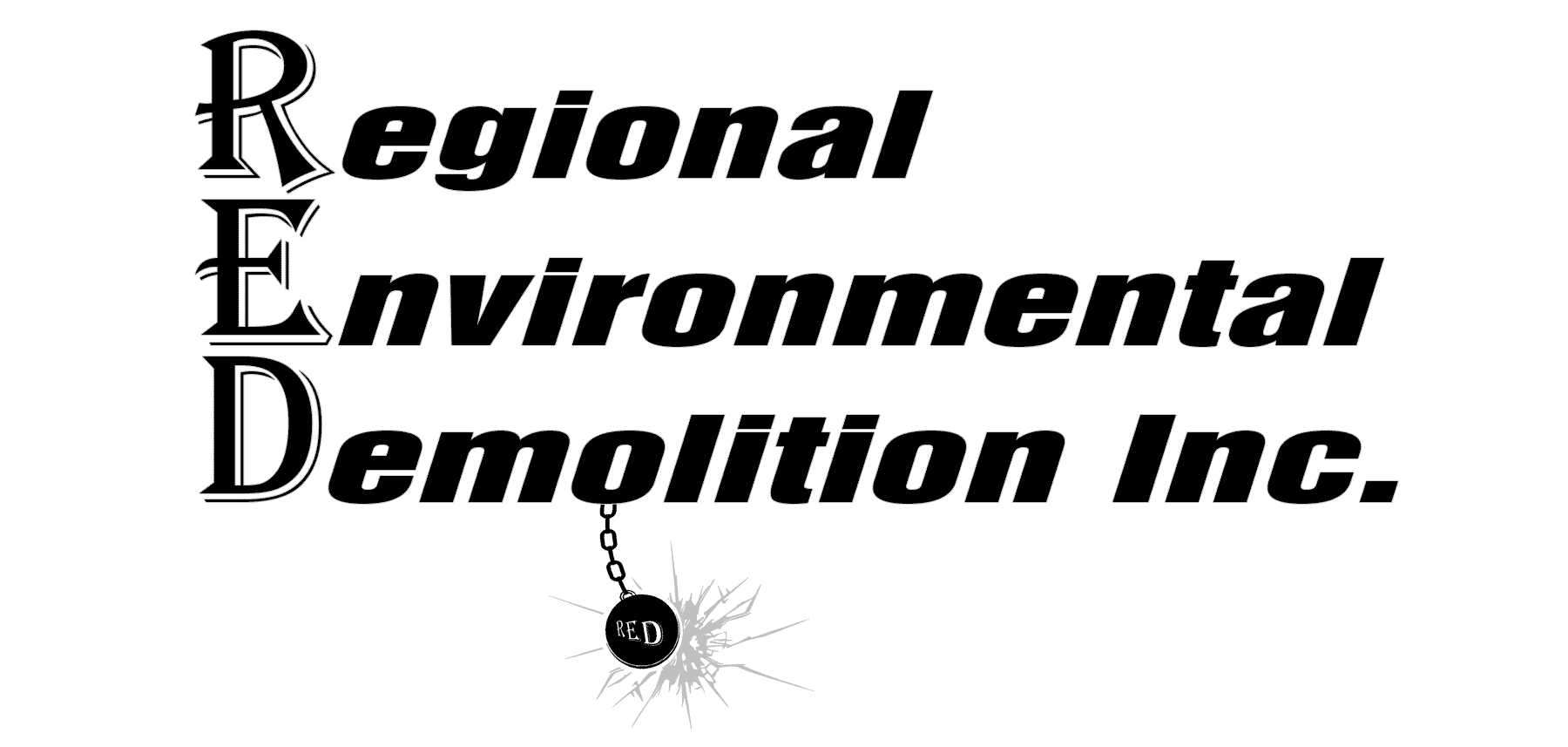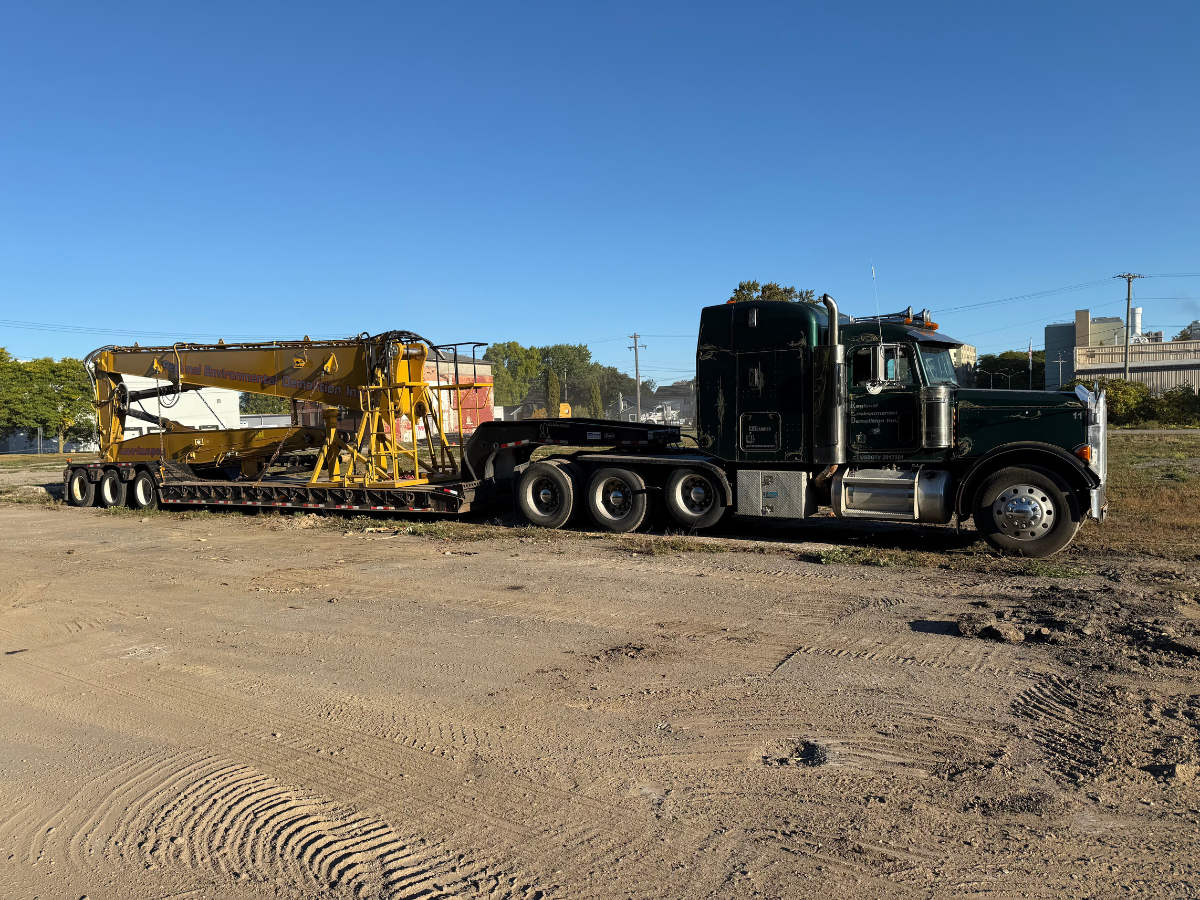How to Safely Remove Mold in Commercial Buildings
Mold growth is a serious issue in commercial properties, affecting offices, warehouses, retail spaces, and apartment buildings. Unlike residential mold, commercial mold infestations can spread quickly, leading to structural damage, health risks for employees and tenants, and even liability concerns for business owners.
Understanding the causes of mold in commercial buildings, the health risks involved, and the proper steps for professional remediation is essential for maintaining a safe and healthy work environment.
At Regional Environmental Demolition Inc. (R.E.D.), we provide expert mold remediation services for businesses across Buffalo, Niagara Falls, and Western New York.
1. What Causes Mold Growth in Commercial Buildings?
Mold thrives in moist, humid environments, making commercial buildings particularly vulnerable due to their larger HVAC systems, plumbing complexities, and varying occupancy levels.
Common Causes of Commercial Mold Growth:
✔ Leaky Pipes and Plumbing Issues – Water leaks behind walls or under floors create the perfect conditions for mold.
✔ Poor Ventilation – High humidity in offices, warehouses, and basements allows mold to spread.
✔ Roof Leaks and Flooding – Water intrusion from storm damage, clogged gutters, or burst pipes can lead to rapid mold growth.
✔ Damp Carpets and Ceiling Tiles – Poor drainage or humidity buildup can cause moisture retention, encouraging mold spores to spread.
✔ HVAC System Contamination – If mold gets into air ducts, spores can circulate throughout the entire building.
2. Signs of Mold in Your Commercial Property
Mold often grows in hidden spaces, making it difficult to detect until it becomes a serious problem. Business owners and property managers should look for these warning signs:
• Musty Odors – A persistent damp or musty smell can indicate mold behind walls, carpets, or ceilings.
• Visible Mold Growth – Mold can appear as black, green, or white patches on walls, ceilings, and furniture.
• Increased Allergy Symptoms – Employees or tenants experiencing coughing, sneezing, skin irritation, or breathing issues may be reacting to airborne mold spores.
• Peeling Paint or Warped Walls – Moisture buildup behind walls can cause bubbling paint or structural damage.
• Water Stains and Discoloration – Yellow or brown stains on walls and ceilings often signal hidden mold growth.
If you notice any of these signs, immediate action is required to prevent mold from spreading further.
3. Why Mold in Commercial Buildings Is a Serious Health Hazard
Unchecked mold growth not only damages property but can pose severe health risks for employees, customers, and tenants.
Health Effects of Mold Exposure:
🔴 Respiratory Issues – Mold spores can cause chronic coughing, wheezing, and difficulty breathing.
🔴 Allergic Reactions – Skin rashes, sinus congestion, and watery eyes are common symptoms.
🔴 Worsened Asthma and Lung Conditions – Mold exposure can trigger asthma attacks and worsen pre-existing conditions.
🔴 Sick Building Syndrome (SBS) – Businesses with ongoing mold problems may notice higher absenteeism and decreased productivity.
For businesses, mold exposure can also lead to lawsuits if tenants or employees suffer health problems due to poor indoor air quality.
4. The Professional Mold Remediation Process
Mold remediation in commercial buildings requires more than just surface cleaning—it involves identifying and eliminating the root cause of moisture and mold growth.
At R.E.D., our commercial mold remediation process includes:
✔ Mold Inspection and Testing
• Our specialists conduct a full assessment of mold-affected areas to determine the extent of the contamination.
• Air and surface testing can detect hidden mold spores in HVAC systems and behind walls.
✔ Containment to Prevent Spread
• We create sealed work zones to prevent mold spores from spreading to other areas of your business.
• Negative air pressure machines and HEPA filtration trap airborne mold particles.
✔ Safe Mold Removal and Disposal
• We use EPA-approved antimicrobial treatments to kill mold at the source.
• Contaminated materials such as damaged drywall, insulation, and flooring are safely removed and replaced.
✔ Drying and Moisture Control
• Dehumidifiers and air movers ensure that no moisture is left behind to prevent future mold growth.
• We identify leaks or ventilation issues and recommend solutions to prevent future mold infestations.
5. How to Prevent Future Mold Problems in Your Commercial Property
After professional remediation, preventive maintenance is key to ensuring mold does not return.
Mold Prevention Strategies for Businesses:
✔ Regularly inspect HVAC systems and air ducts for moisture buildup.
✔ Address water leaks and plumbing issues immediately to prevent damp conditions.
✔ Keep indoor humidity levels below 50% with proper ventilation and dehumidifiers.
✔ Clean and maintain commercial carpets, ceilings, and walls to prevent mold accumulation.
✔ Schedule routine mold inspections to catch potential problems before they become severe.
Proactive mold management is essential for protecting your business, employees, and tenants.
Protect Your Business with Professional Mold Remediation
Mold problems in commercial buildings can’t be ignored. Whether it’s an office, warehouse, apartment complex, or retail space, mold can cause serious structural damage, health risks, and legal liabilities.
At Regional Environmental Demolition Inc. (R.E.D.), we specialize in safe and effective mold remediation for businesses across Buffalo, Niagara Falls, and Western New York. Our team is fully licensed and experienced in handling mold removal for large-scale commercial properties.
Concerned about mold in your business? Contact R.E.D. today for professional commercial mold remediation. Protect your employees, tenants, and property with expert mold removal services.






